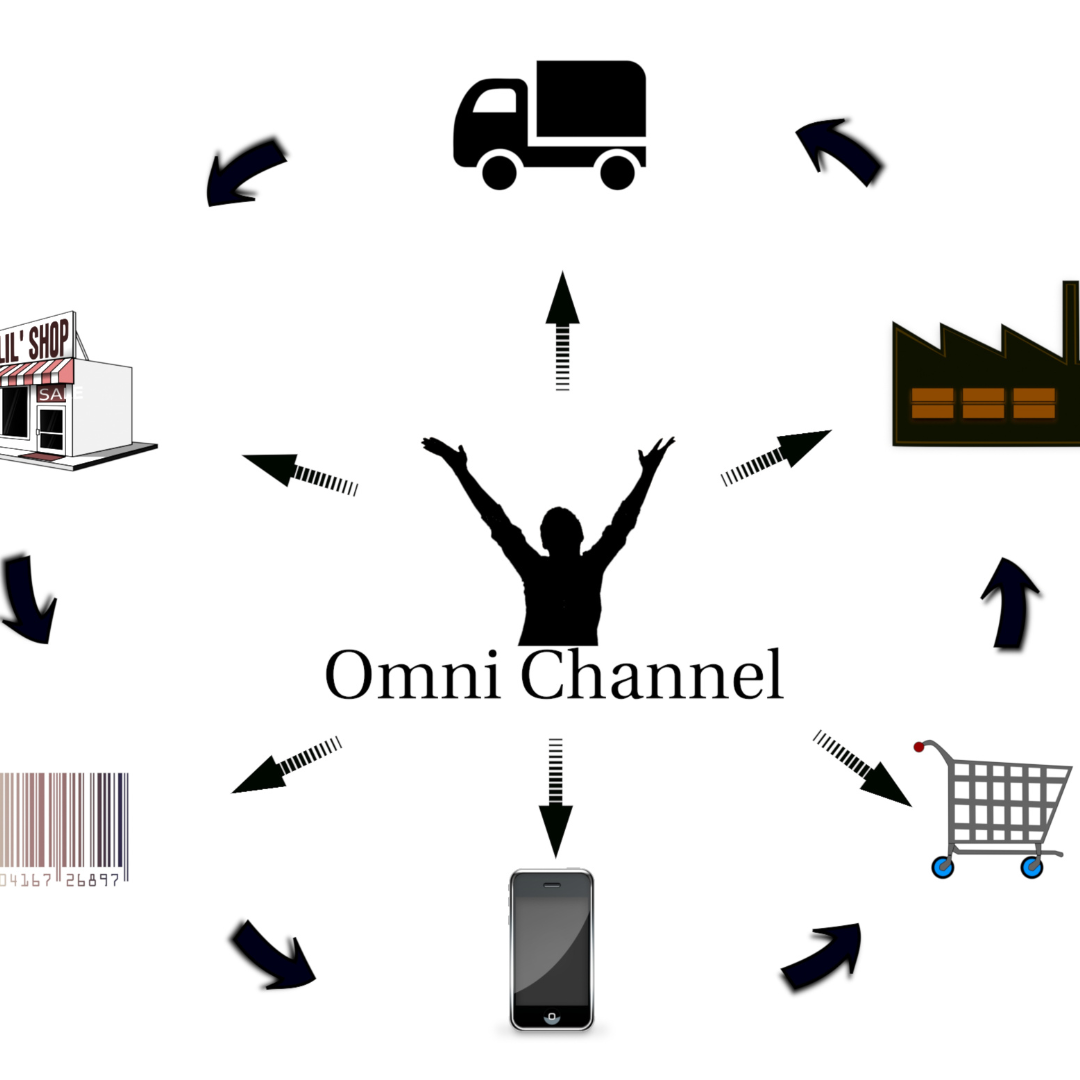Outsourcing has become a common strategy for businesses seeking efficiency and cost savings. From managed IT services from companies such as Cicom to payroll management. Yet, many leaders worry about how to maintain quality control when their processes are handled by third parties. Effective oversight and communication channels can ensure that the quality of outsourced work meets or even exceeds in-house standards.
Navigating this landscape necessitates a robust framework for evaluating and managing external partners. Strategies such as setting clear expectations, regular performance assessments, and fostering a culture of transparency are essential. By establishing these practices, organizations can align their outsourced projects with their quality benchmarks.
Investing in technology can also streamline the quality control process. Tools for tracking performance and collecting feedback help maintain standards across various locations. Adopting these methods allows businesses to reap the benefits of outsourcing without compromising on quality.
Understanding Outsourcing
Outsourcing involves delegating certain business tasks to external parties. This process can vary in scope and has distinct benefits and challenges that organizations must evaluate carefully.
Defining Outsourcing and Its Scope
Outsourcing refers to the practice of contracting external organizations to handle specific business functions. Businesses may choose to outsource a range of tasks depending on their needs.
For instance, businesses have the option to outsource the entire process, from the initial creation of concept to large scale production to third-party vendors. This allows companies to focus on core activities while leveraging the expertise and resources of external partners.
Similarly, only a fraction of business operations can be outsourced to improve efficiency and reduce costs. One common area is customer service, which is frequently outsourced to specialized call centers or support teams. These teams are trained to handle customer inquiries, address complaints, and provide technical support, ensuring a smooth and professional experience for customers.
In addition to these common areas, companies may hire Kentucky Managed IT Services, or similar providers to maintain their technology infrastructure, and to make sure network security, data backups, and software updates are handled by experts. Outsourcing can also extend to financial services like bookkeeping and accounting, where skilled professionals manage payroll, tax preparation, and financial reporting.
Firms may opt for domestic or international outsourcing, impacting costs and service quality. Understanding the scope is crucial, as it can dictate the effectiveness and efficiency of outsourcing decisions.
Benefits and Challenges of Outsourcing
The benefits of outsourcing are significant. Cost efficiency often emerges as a primary advantage, with firms able to reduce expenses related to workforce and resources.
Additionally, companies can:
- Focus on Core Activities: Allows internal teams to concentrate on essential business functions.
- Access Expertise: Engage specialized skills that may not be available in-house.
Despite the positives, challenges exist. For instance, quality control may become an issue when relying on external vendors. Communication barriers can also hinder productivity.
Other potential pitfalls include:
- Loss of Control: Difficulty in managing quality and timelines.
- Cultural Differences: Variations in work ethic and professional standards can lead to misunderstandings.
These factors necessitate careful consideration to maintain quality throughout the outsourcing process.
Setting Quality Standards
Establishing clear quality standards is crucial when outsourcing to ensure that the desired outcomes meet expectations. Quality standards encompass acceptable quality levels and detailed project guidelines to maintain consistency and reliability in deliverables.
Determining Acceptable Quality Levels
Acceptable Quality Levels (AQL) define the maximum number of defects tolerated in a sample. Organizations should analyze factors such as product type, industry standards, and customer tolerance.
Key considerations include:
- Product Requirements: Specific quality attributes needed, like dimensions or performance metrics.
- Industry Benchmarks: Standards set by industry leaders or regulatory bodies that need to be adhered to.
- Risk Assessment: Evaluating how defects impact business operations or customer satisfaction helps in setting realistic AQL.
For example, AQL might be set at 1% for critical components and 5% for non-critical ones, allowing flexibility based on the product’s importance.
Developing Clear Project Guidelines
Clear project guidelines help to communicate expectations effectively to outsourcing partners. These guidelines should cover all aspects of the project from start to finish.
Essential components include:
- Scope of Work: Detailed description of tasks, deliverables, and timelines.
- Quality Control Procedures: Specific methods for inspecting and testing products before delivery.
- Communication Protocols: Establishing frequency and nature of updates between teams.
Including visual aids such as flowcharts and checklists can enhance understanding and compliance. Defining these parameters helps to align the outsourcing partner’s output with the organization’s quality expectations, thereby minimizing misunderstandings and enhancing final results.
Selecting the Right Vendor
Choosing the proper vendor is crucial for maintaining quality control while outsourcing. This involves a thorough examination of their capabilities, experience, and quality control processes. A well-chosen vendor can enhance productivity and ensure standards are met consistently.
Assessing Vendor Capabilities and Experience
When assessing potential vendors, it is essential to evaluate their capabilities and relevant experience. This includes reviewing their portfolio to understand their previous projects and expertise in specific industries.
Factors to consider include:
- Industry Experience: Look for vendors that have a history of working in your sector.
- Technical Proficiency: Ensure they possess the necessary skills and tools to meet quality standards.
- Resource Availability: Confirm that they have the workforce and technology to handle your project size and complexity.
Requesting client references or case studies can provide insight into their reliability and effectiveness.
Evaluating Vendor Quality Controls
Quality control processes are critical in determining a vendor’s commitment to maintaining standards. When evaluating a vendor’s quality controls, examine their methodologies and certifications.
Important aspects include:
- Quality Certifications: Check for ISO or industry-specific certifications demonstrating compliance with quality standards.
- Inspection Processes: Understand their procedures for inspecting and testing products or services to ensure adherence to requirements.
- Feedback Mechanisms: Assess whether they have systems in place for feedback and continuous improvement.
A vendor that prioritizes quality control will often provide transparent documentation of their processes, which is essential for effective collaboration.
Crafting Effective Contracts
Effective contracts play a crucial role in maintaining quality control while outsourcing. They set clear expectations and responsibilities, fostering a collaborative environment between parties.
Including Quality Clauses in Contracts
Incorporating quality clauses into contracts ensures that specific performance standards are met. These clauses should detail the metrics for quality assessment, such as industry benchmarks or key performance indicators (KPIs).
It’s important to define processes for quality checks, including who conducts them and the frequency. Additionally, establishing a protocol for addressing quality failures can mitigate risks. For instance:
- Remediation Steps: Outline corrective actions if standards are not met.
- Financial Penalties: Specify monetary consequences for failing to achieve quality targets.
Clear quality expectations can lead to better results and accountability from the outsourcing partner.
Defining Deliverables and Deadlines
Clearly defining deliverables and deadlines is essential for project success. Contracts should specify what is expected in terms of output, including detailed descriptions of deliverables.
A well-structured timeline is equally important. This might include milestones and final deadlines. For clarity, consider creating a timeline table that outlines:
| Deliverable | Due Date | Acceptance Criteria |
| Initial Draft | [Date] | Meets specified guidelines |
| Final Submission | [Date] | Approval from stakeholders |
By clearly outlining expectations, parties can maintain focus, ensuring timely delivery and quality work. Such precision fosters a better working relationship while supporting quality control objectives.
Communication and Collaboration
Effective communication and collaboration are essential when outsourcing to maintain quality control. They ensure that all parties understand expectations, responsibilities, and feedback loops, fostering a productive relationship.
Establishing Communication Protocols
Clear communication protocols set the foundation for successful outsourcing. This includes defining:
- Preferred Communication Channels: Identify the primary methods (e.g., email, video calls, project management tools) for updates and discussions.
- Response Times: Establish expectations for timely replies to inquiries, helping to prevent delays.
- Regular Check-ins: Schedule recurring meetings to review progress, discuss challenges, and make necessary adjustments.
Utilizing a shared platform for documentation and progress tracking can enhance transparency. Regular updates help keep all stakeholders aligned and accountable, minimizing misunderstandings.
Fostering a Partnership Approach
A partnership approach cultivates a collaborative spirit. It requires:
- Shared Goals: Align objectives so both parties work toward the same outcomes, increasing motivation and accountability.
- Open Feedback Channels: Encourage constructive criticism and positive reinforcement, allowing for continuous improvement.
- Inclusive Decision-Making: Involve outsourced teams in key decisions, valuing their input and expertise.
Building trust is crucial. Recognizing the contributions of your outsourced team, such as hr consultants in london, fosters a sense of ownership, improving quality and performance. This partnership mindset leads to better solutions and long-term success.
Monitoring and Reporting
Effective monitoring and reporting are essential for maintaining quality control during the outsourcing process. This section focuses on implementing continuous monitoring systems and ensuring regular reporting and feedback.
Implementing Continuous Monitoring Systems
To maintain quality control, it is crucial to establish a continuous monitoring system. This system should integrate key performance indicators (KPIs) that align with the organization’s quality standards.
Key elements to include:
- Real-time data tracking: Use technology to gather data continuously from outsourced operations.
- Automated alerts: Set up notifications for deviations from quality benchmarks.
- Regular audits: Schedule periodic checks to assess compliance with standards.
A continuous monitoring approach provides timely insights into potential quality issues, enabling proactive management.
Regular Reporting and Feedback
Regular reporting is vital for transparency and accountability within outsourced operations. Establishing a structured reporting framework helps in tracking progress effectively.
Components of an effective reporting system:
- Scheduled reports: Design weekly or monthly reports to measure performance against KPIs.
- Feedback loops: Implement channels for stakeholders to provide insights and suggestions based on report findings.
- Performance reviews: Conduct frequent evaluations to discuss outcomes and address any quality concerns.
By maintaining an ongoing dialogue through reporting, organizations can ensure that quality control measures are effectively upheld.
Quality Control Techniques
Effective quality control techniques are essential for maintaining high standards while outsourcing. These techniques ensure consistent product quality and enhance collaboration between teams.
Adopting Standardized Quality Metrics
Standardized quality metrics provide clear benchmarks for performance evaluation. These metrics can include defect rates, compliance levels, and customer satisfaction scores.
Establishing these metrics involves defining specific criteria that align with industry standards. Companies can utilize tools like Key Performance Indicators (KPIs) to monitor progress.
Regular performance assessments based on these metrics help identify areas for improvement. They also facilitate communication with outsourcing partners regarding quality expectations.
Using standardized metrics reduces variability in quality and increases accountability. It ensures all parties understand their roles in maintaining quality standards.
Utilizing Quality Control Tools
Quality control tools are crucial for detecting issues early in the production process. Techniques such as Statistical Process Control (SPC) can monitor processes in real-time.
Checklists and control charts help teams ensure that all quality measures are being assessed consistently. Automated systems can aid in gathering data and simplifying the analysis of quality trends.
Training staff in these tools enhances their ability to identify defects. This proactive approach allows for timely corrective actions, minimizing potential impacts on delivery schedules.
Incorporating feedback mechanisms further supports quality improvement. It creates a culture of continuous improvement among teams involved in the outsourcing process.
Dealing with Non-compliance
Non-compliance in outsourcing can disrupt operations. To effectively address these issues, companies should implement corrective actions and manage vendor performance proactively.
Corrective Actions for Quality Issues
When quality issues arise, immediate assessment is critical. Identifying the root cause helps clarify what corrective actions are necessary. Possible actions include:
- Re-evaluating Processes: Analyze the current workflow where the issue occurred.
- Training: Provide additional training to vendor staff to align them with quality standards.
- Quality Audits: Conduct audits to ensure compliance with specified guidelines.
Reporting these actions to stakeholders reinforces accountability. Following up on the corrective measures ensures that improvements are sustained and that quality standards are re-established.
Managing Vendor Non-performance
Managing vendor non-performance requires a systematic approach. Key strategies include:
- Performance Metrics: Establish clear metrics to evaluate vendor performance regularly.
- Regular Communication: Maintain open lines of communication with vendors to address issues promptly.
- Performance Reviews: Schedule periodic reviews to assess compliance with service-level agreements.
If performance does not improve, organizations may need to consider actions such as renegotiating terms, imposing penalties, or even terminating contracts. Documenting all interactions and performance issues provides essential support for any decisions made regarding vendor relationships.
Continuous Improvement
Continuous improvement is essential for maintaining quality control in outsourcing. It involves regularly assessing performance and implementing strategies to enhance processes and outcomes.
Analyzing Performance Data
Performance data analysis provides insights into areas where improvements are necessary. Key metrics to track include defect rates, turnaround times, and customer feedback.
Regularly reviewing this data allows companies to identify trends. For example, if defect rates increase during specific periods, it can indicate a need for retraining or process adjustment.
Using tools such as dashboards and reports can facilitate this analysis. Visual representations help teams quickly grasp performance levels and areas needing attention.
Creating a schedule for performance reviews ensures that data is consistently analyzed. This proactive approach allows for timely interventions that can prevent more significant issues down the line.
Strategies for Quality Enhancement
Implementing quality enhancement strategies can significantly improve outsourcing outcomes. Training and development for teams play a pivotal role. Continuous education ensures that staff members remain updated with industry standards and practices.
Additionally, establishing clear quality benchmarks is crucial. These benchmarks serve as measurable goals that teams strive to achieve. Sharing these targets with the outsourcing teams fosters accountability.
Regular feedback sessions can further improve quality. These sessions provide opportunities for discussing challenges and celebrating successes. Tools such as checklists and standard operating procedures can standardize tasks.
Lastly, adopting a culture of open communication encourages collaboration. When team members feel comfortable sharing insights, they can address issues before they escalate.
Risk Management
Effective risk management is essential when outsourcing processes. Identifying potential risks and ensuring business continuity can significantly impact quality control and overall success.
Identifying and Mitigating Outsourcing Risks
Risk identification involves recognizing various factors that may affect the outsourcing relationship. Key risks include:
- Quality Assurance: Variability in standards between in-house and outsourced teams can lead to discrepancies in product quality.
- Communication Barriers: Differences in language, culture, or time zones can hinder effective collaboration.
- Data Security: Outsourcing may expose sensitive information to third parties, increasing the risk of data breaches.
To mitigate these risks, organizations should establish clear guidelines and expectations. Implementing ** SLA (Service Level Agreements)** is crucial. Consistent monitoring and audits of the outsourcing partner can help ensure compliance with quality standards.
Ensuring Business Continuity
Continuity plans are vital to maintain operations during disruptions. A well-developed strategy should encompass several elements:
- Backup Suppliers: Engaging multiple vendors can reduce dependency on a single partner. This allows for quick transitions in case of a service disruption.
- Regular Reviews: Conducting frequent evaluations of the outsourcing partner’s performance helps in identifying weaknesses before they escalate.
- Crisis Management Plans: Outlining procedures for various crisis scenarios ensures that the organization can respond quickly and effectively.
- Training Programs: Providing training for internal teams can enhance their ability to manage outsourcing relationships effectively.
By focusing on these areas, organizations can minimize risks associated with outsourcing and maintain consistent quality control.







